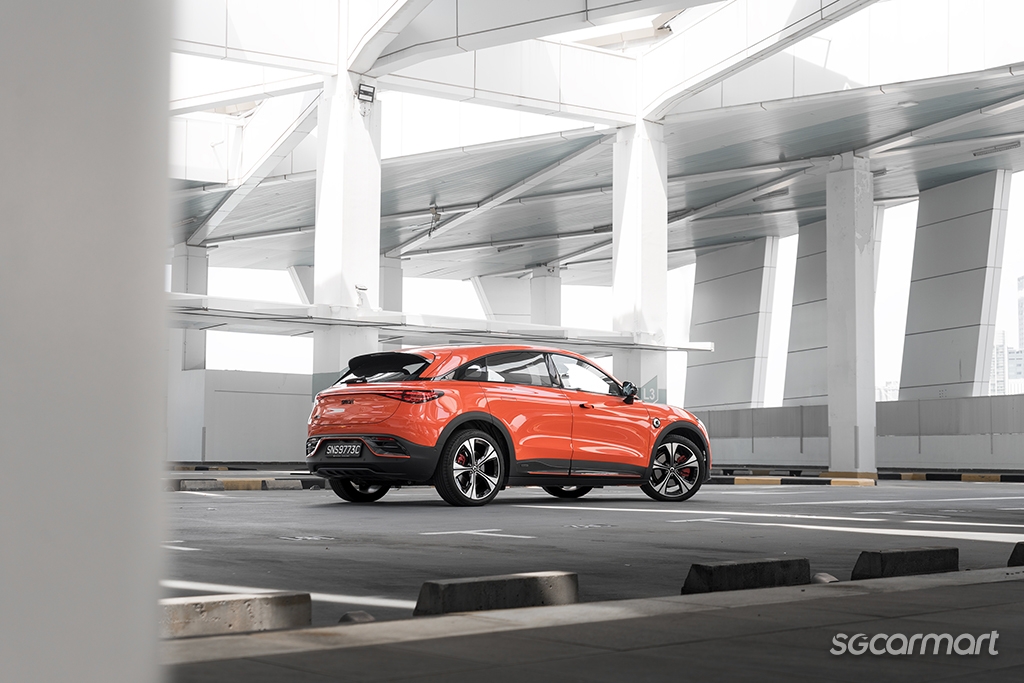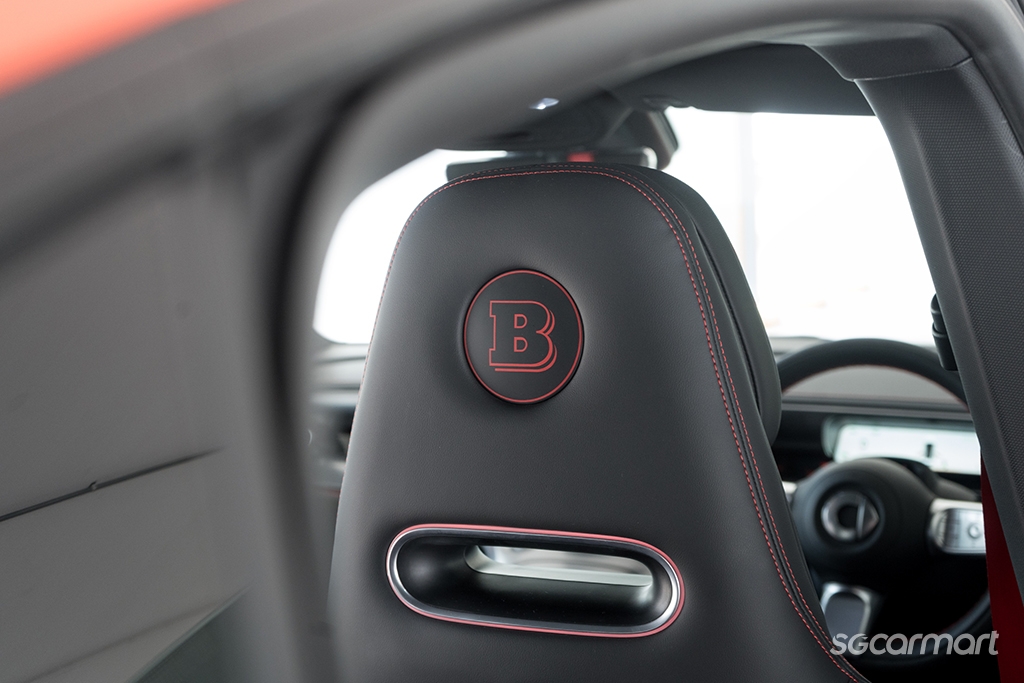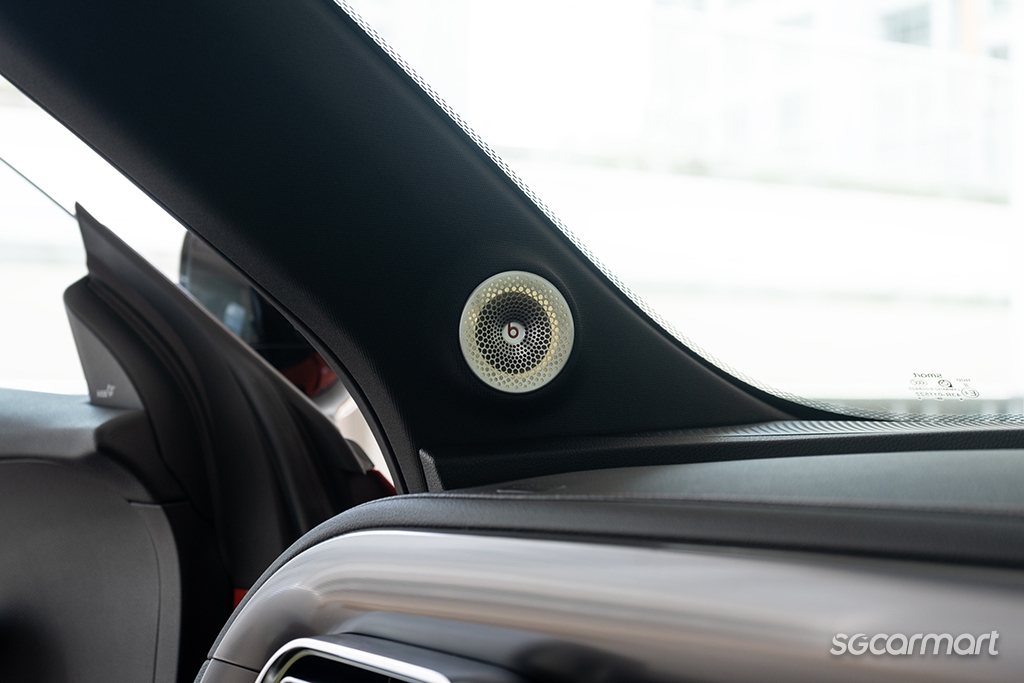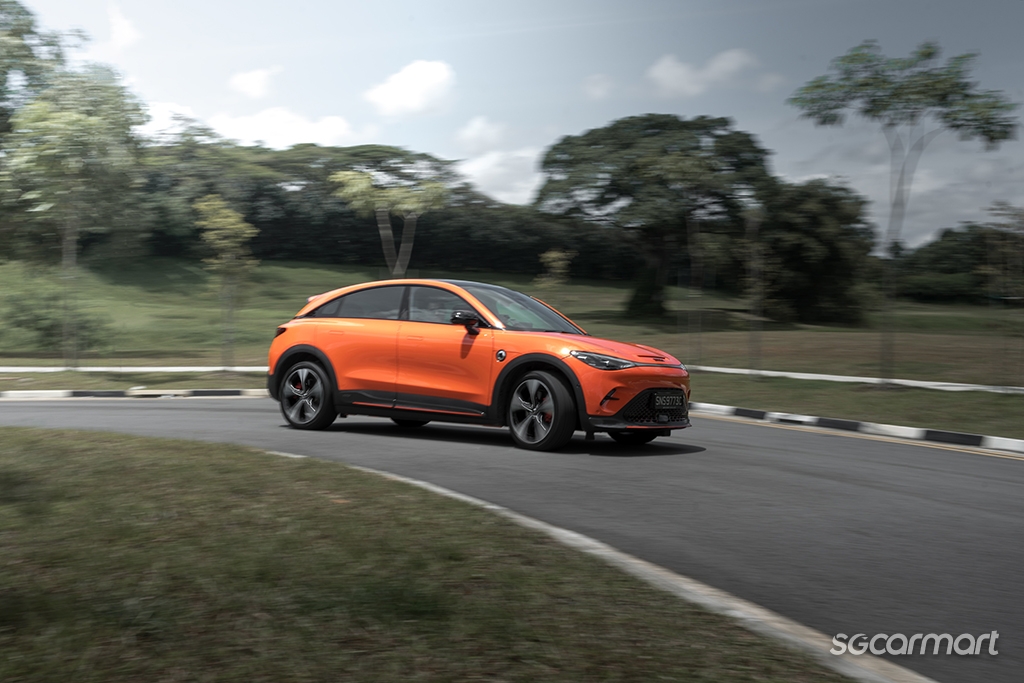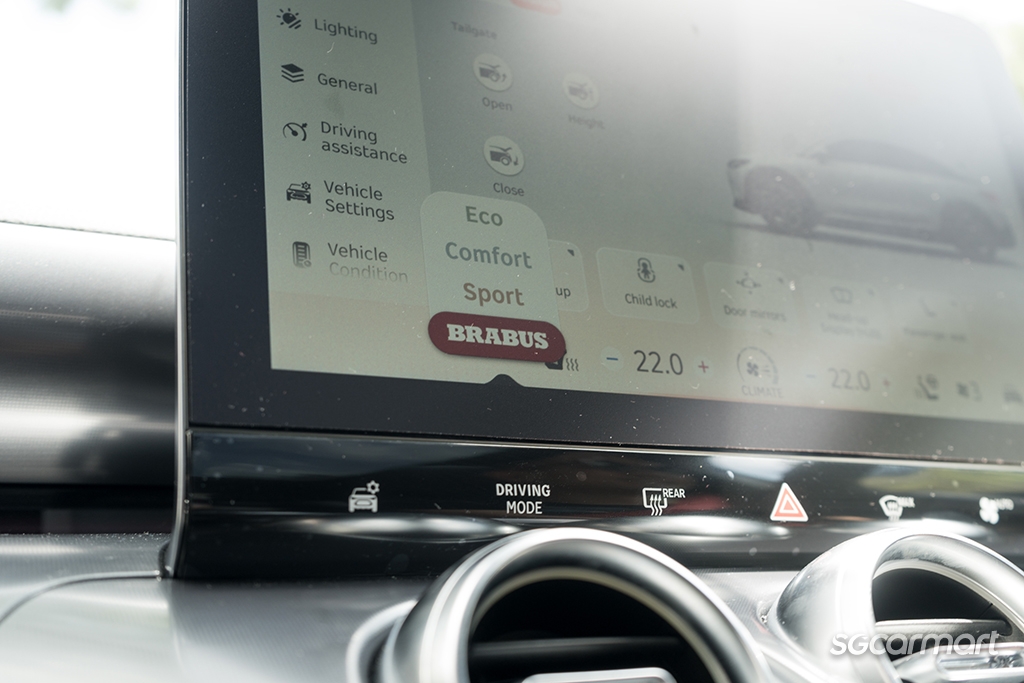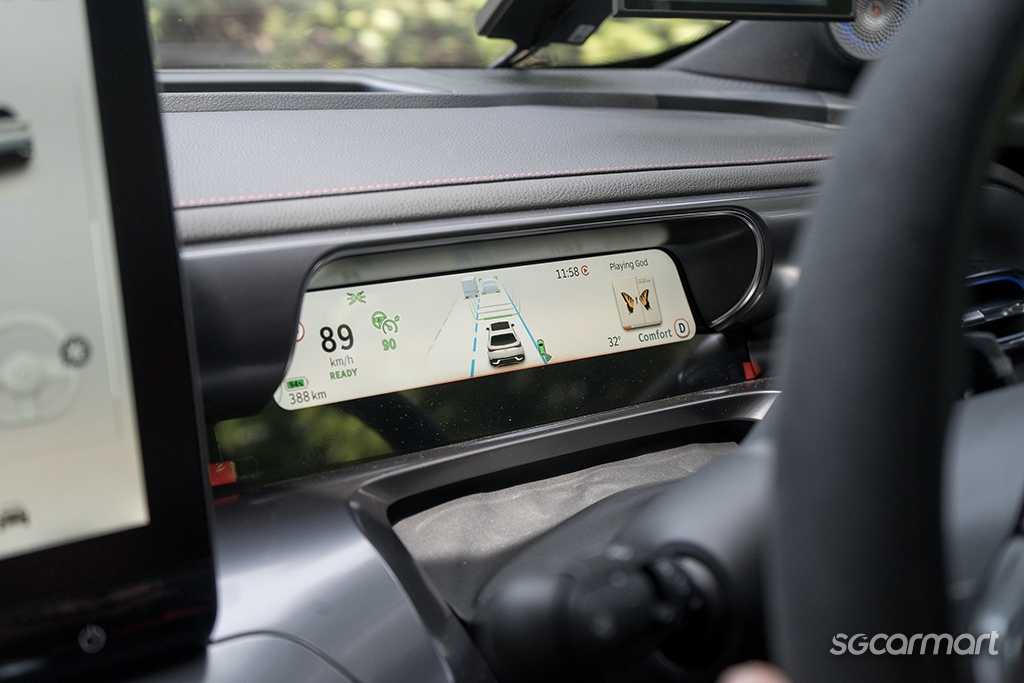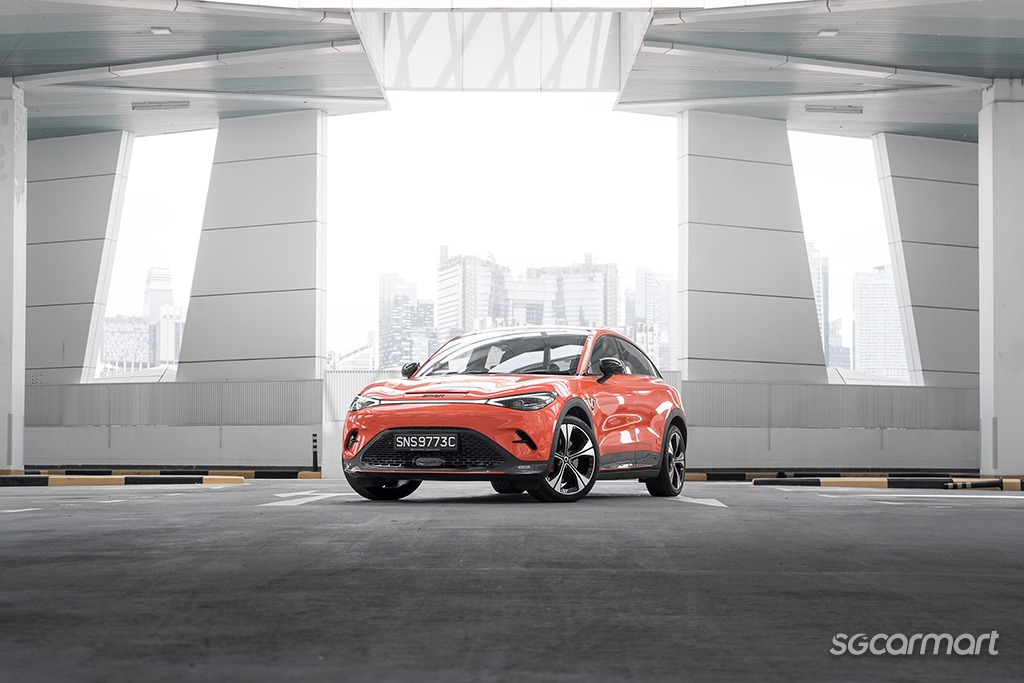Smart #3 Brabus Review
26 Feb 2025|4,150 views
What We Like
Looks handsome in the flesh
Ridiculously quick
Sporty handling
What We Dislike
Rather firm for daily driving
Drive settings reset each time you start the car
Pricey relative to market alternatives
0 to 100km/h in 3.7 seconds.
We now exist in a world where you could buy a SUV (actually, quite a few SUVs) that will outrun the recently launched new 911 Carrera in a straight line.
And now with this #3 Brabus, there's yet one more bruising EV on the market.
It's built on the same shared platform as the #1, but the #3 sets itself apart immediately with its styling. I think it looks quite attractive - helped by a sleek silhouette and a more low-slung disposition.
Yes, it's in that weird nebulous coupe-crossover segment that I still don't fully understand, but in this instance I think it's executed quite well. One reason for this, perhaps, is that it isn't simply the same car with a chopped off roofline. The #3 is 170mm longer, 22mm wider and 80mm lower than the #1, and it looks much better for it.
This one you see here is the Brabus variant (the #1 similarly has a Brabus version as well), replete with sporty exterior garnishes like a more pronounced front lip, attachments to the side air intakes, a rear spoiler, and even an air inlet in front of the hood. Oddly enough, the actual 'Brabus' badging is quite discreet - small plates tucked away to the bottom corners of the car.
Standard equipment on the Brabus model include ample Brabus badging (and of course sporty red detailing), as well as a 13-speaker Beats sound system
The interior is mostly similar to the #1 - you'll find the same screens, the same buttons, and the same general layout. The #3 distinguishes itself with circular air-con vents in the centre of the dashboard, and the large panoramic sunroof doesn’t have a retractable fabric shade.
With the Brabus variant, additional standard equipment include 20-inch wheels, the microfibre sports style seats, ambient lighting+ (there’s illumination on the seat backs as well as around the rear air-con vent, because why not), a Brabus steering wheel, a 10-inch head-up display, and a 13-speaker Beats sound system.
Just like with the #1, I found the infotainment interface here to be charming to look at, but less-intuitive to operate than I would have liked. There's a fair amount of menus to navigate through, and the shortcut bar has limited customisability.
This becomes a notable issue because every time you start the car, the drive settings are reset. And you are likely going to want to turn off some of the audio alerts of the safety systems (they are quite persistent in beeping at you). There's also no way to shortcut this function, so expect to be touching the screen a fair bit before you even set off.
Set off, and the car's immense performance is impossible to miss. Even the lightest throttle prods are met with gusto. Courtesy of two electric motors that pump out 315kW and 543Nm of torque, this car will complete the century sprint in 3.7 seconds. That's the same as a Taycan GTS, which is nuts.
And it feels every bit that quick. Put it in Brabus mode, get hard on the throttle, and the acceleration is absolutely brutal.
Is it performance you can use? Well, that's a tricky question. The chassis is set up for sportier driving, and the reasonably sharp helm means that you can spank the car through windy roads. In those instances, the performance kind of makes sense.
But for the general mundanity of day-to-day driving, the suspension is certainly on the firmer side (the ride becomes quite busy), and all that power under your right foot will be largely untapped.
I also wish the regenerative braking settings had a greater spread between the low, medium and high settings that you can select.
Are there reasons to opt for this Brabus model over the standard #3? Sure. It is faster (and outrageously so), it can charge more quickly (22kW max AC charging), and it's got a few more bits and bobbins.
But I also wonder who this car is designed for. Buyers who wanted the sleek coupe-crossover styling will likely be happy with the #3 Pro+. It's got plenty of performance already, can eke out a bit more range from the battery, and costs 50 grand less.
The #3 Brabus, while certainly demonstrating dynamic chops, is still no performance vehicle, electric or otherwise. And that puts it in a strange spot where I'm not sure who needs a car like this. I had plenty of fun while driving the car, but I'm not certain I would want to own it. One suspects that the #3 Pro+ is plenty enough.
Here are other sub-4 second EVs to consider:
The Smart #1 Brabus adds on to the base car's playful charms with ridiculous power
The BYD Seal Performance delivers rabid performance alongside sharp looks
What We Like
Looks handsome in the flesh
Ridiculously quick
Sporty handling
What We Dislike
Rather firm for daily driving
Drive settings reset each time you start the car
Pricey relative to market alternatives
0 to 100km/h in 3.7 seconds.
We now exist in a world where you could buy a SUV (actually, quite a few SUVs) that will outrun the recently launched new 911 Carrera in a straight line.
And now with this #3 Brabus, there's yet one more bruising EV on the market.
It's built on the same shared platform as the #1, but the #3 sets itself apart immediately with its styling. I think it looks quite attractive - helped by a sleek silhouette and a more low-slung disposition.
Yes, it's in that weird nebulous coupe-crossover segment that I still don't fully understand, but in this instance I think it's executed quite well. One reason for this, perhaps, is that it isn't simply the same car with a chopped off roofline. The #3 is 170mm longer, 22mm wider and 80mm lower than the #1, and it looks much better for it.
This one you see here is the Brabus variant (the #1 similarly has a Brabus version as well), replete with sporty exterior garnishes like a more pronounced front lip, attachments to the side air intakes, a rear spoiler, and even an air inlet in front of the hood. Oddly enough, the actual 'Brabus' badging is quite discreet - small plates tucked away to the bottom corners of the car.
Standard equipment on the Brabus model include ample Brabus badging (and of course sporty red detailing), as well as a 13-speaker Beats sound system
The interior is mostly similar to the #1 - you'll find the same screens, the same buttons, and the same general layout. The #3 distinguishes itself with circular air-con vents in the centre of the dashboard, and the large panoramic sunroof doesn’t have a retractable fabric shade.
With the Brabus variant, additional standard equipment include 20-inch wheels, the microfibre sports style seats, ambient lighting+ (there’s illumination on the seat backs as well as around the rear air-con vent, because why not), a Brabus steering wheel, a 10-inch head-up display, and a 13-speaker Beats sound system.
Just like with the #1, I found the infotainment interface here to be charming to look at, but less-intuitive to operate than I would have liked. There's a fair amount of menus to navigate through, and the shortcut bar has limited customisability.
This becomes a notable issue because every time you start the car, the drive settings are reset. And you are likely going to want to turn off some of the audio alerts of the safety systems (they are quite persistent in beeping at you). There's also no way to shortcut this function, so expect to be touching the screen a fair bit before you even set off.
Set off, and the car's immense performance is impossible to miss. Even the lightest throttle prods are met with gusto. Courtesy of two electric motors that pump out 315kW and 543Nm of torque, this car will complete the century sprint in 3.7 seconds. That's the same as a Taycan GTS, which is nuts.
And it feels every bit that quick. Put it in Brabus mode, get hard on the throttle, and the acceleration is absolutely brutal.
Is it performance you can use? Well, that's a tricky question. The chassis is set up for sportier driving, and the reasonably sharp helm means that you can spank the car through windy roads. In those instances, the performance kind of makes sense.
But for the general mundanity of day-to-day driving, the suspension is certainly on the firmer side (the ride becomes quite busy), and all that power under your right foot will be largely untapped.
I also wish the regenerative braking settings had a greater spread between the low, medium and high settings that you can select.
Are there reasons to opt for this Brabus model over the standard #3? Sure. It is faster (and outrageously so), it can charge more quickly (22kW max AC charging), and it's got a few more bits and bobbins.
But I also wonder who this car is designed for. Buyers who wanted the sleek coupe-crossover styling will likely be happy with the #3 Pro+. It's got plenty of performance already, can eke out a bit more range from the battery, and costs 50 grand less.
The #3 Brabus, while certainly demonstrating dynamic chops, is still no performance vehicle, electric or otherwise. And that puts it in a strange spot where I'm not sure who needs a car like this. I had plenty of fun while driving the car, but I'm not certain I would want to own it. One suspects that the #3 Pro+ is plenty enough.
Here are other sub-4 second EVs to consider:
The Smart #1 Brabus adds on to the base car's playful charms with ridiculous power
The BYD Seal Performance delivers rabid performance alongside sharp looks
Car Information
smart #3 electric Brabus 66 kWh (A)
$280,000
CAT B|Electric|5.68km/kWh
Horsepower
315kW (422 bhp)
Torque
543 Nm
Acceleration
3.7sec (0-100km /hr)
Promotion
Enjoy year-end promotions on all smart models and secure your last chance to benefit from the full $40,000 of EV rebates today.
Read moreThank You For Your Subscription.
- Stylish Disposition
- Performance Thirst
- Conclusion
















































